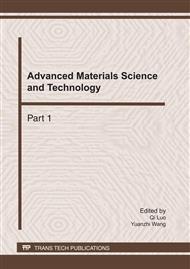p.908
p.914
p.919
p.926
p.932
p.937
p.943
p.949
p.955
Matrix Assembly Method for Insulating Glass Sound Transmission
Abstract:
A novel method named matrix assembly method is proposed for insulating glass sound transmission. Firstly, acoustic principle and boundary condition are applied to form acoustic equations. Using the matrix assembly method, these acoustic equations can be composed a universal procedure with a general format for insulating glass sound transmission. Efficiency and general capability of this novel method are very high. Lastly, universal procedure is used to solve insulating glass in the code for insulating glass of People's Republic of China. Subsequently some very useful conclusions are conducted for insulating glass, which shows that this novel method for insulating glass is feasible. Furthermore, efficiency and general capability of this novel method are high
Info:
Periodical:
Pages:
932-936
Citation:
Online since:
January 2011
Authors:
Keywords:
Price:
Сopyright:
© 2011 Trans Tech Publications Ltd. All Rights Reserved
Share:
Citation:


